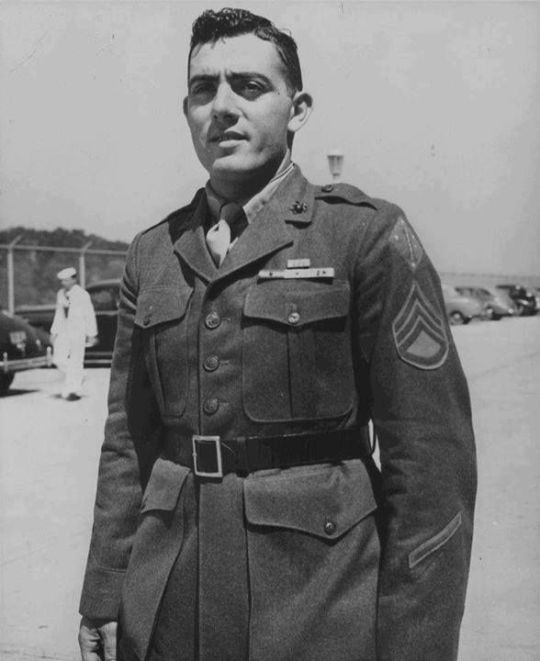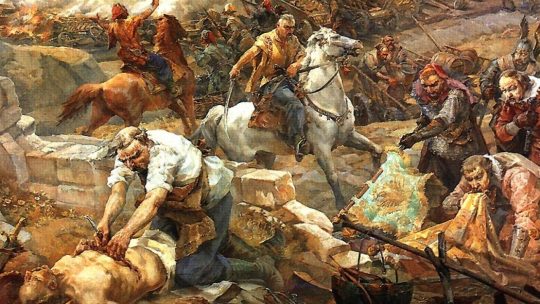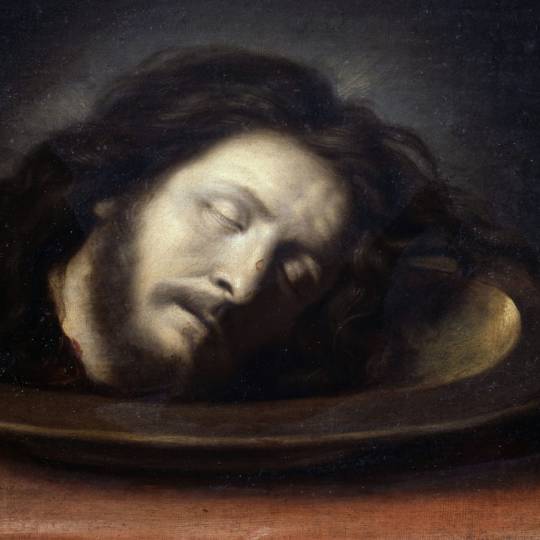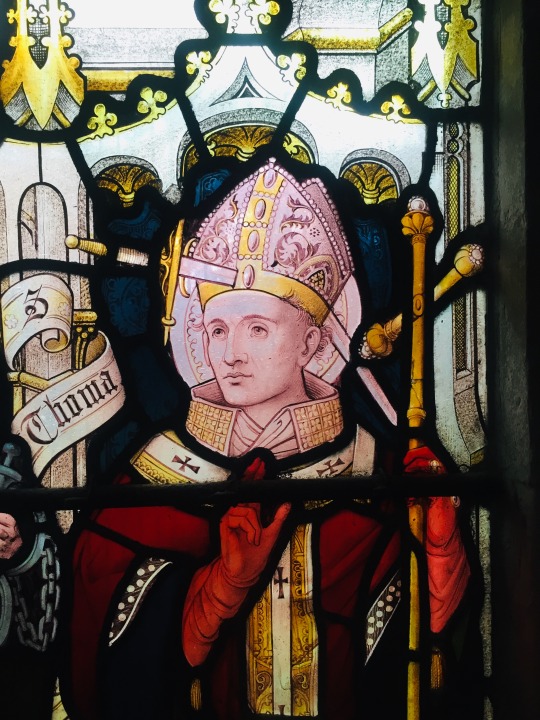Don't wanna be here? Send us removal request.
Photo

This image is of another American hero, Pfc. Desmond Doss an Army medic who saved over 70 lives in one battle when he had the chance to save himself. This man is another Congressional Medal of Honor recipient for his actions at Hacksaw Ridge in the battle for Okinawa. Now, Doss did not die at the battle so he cannot be labeled as a martyr. He can however, could have easily became a martyr. Doss was a conscientious objector for religious reasons and he refused to carry a weapon into combat. After much debate, he became a medic for the Army and served alongside the men he had been training with. Although he was facing the gruesome realities that is war, he decided to fight along side his fellow countrymen with no protection for himself. Doss was willing and ready to save as many lives as he could regardless of the outcome, and had he died he would most definitely been labeled a Martyr. He had been a man to face down the barrel of a gun, ignore it due to his faith, and continue to save lives. For his actions he was awarded the Medal of Honor and had he died I believe he could have been labeled a religious and military martyr.
0 notes
Photo

This man is John Basilone, a marine from World War II who earned the Congressional medal of honor for his actions at Guadalcanal in the Pacific theater. He was in a machine gun team at Guadalcanal and using his own quick wits and skill was able to fend off Japanese attackers. Now this is a weird moment as this man is a veteran of World War II not a reniassance clergy member who died due his faith. When John Basilone was awarded the Medal of Honor, he was shipped back to the United States to become a poster boy for war bonds across America. He would become a hero in his home town, but after a few years John Basilone volunteered to become a gunnery sergeant and train new marines. He would eventually go and lead the men he trained in combat at Iwo Jima where he was killed. The reason I picked John Basilone, was because he believed, fought, and died for the same reasons a martyr might in the faith. John Basilone was an American hero because of his unwilling to break his ties with his men and his unit to keep himself alive. He continued to fight for what he believed was right and died because of it. His sacrifice is similar to that of many martyrs and can be seen as one, not of the faith, but as an American.
0 notes
Photo

This other resume depiction is of the Khmelnytsky Uprising in Ukraine between 1648 and 1657. This was a time when the Cossacks were traveling across Eastern Europe looking for whatever they can get their hands on. This area was a Greater Polish empire region that had a decent sized Jewish population. Here, many thousands of Jews died due to the cossacks pillaging. One such individual was Yechiel Michel ben Eliezer son of a Rabbi he was very faithful to Judaism. He would tell followers to be martyred rather than convert, and eventually he himself would be martyred when he was clubbed to death in 1648 in a Jewish cemetery.
1 note
·
View note
Photo

This gruesome image is the of John the Baptist, Christian martyr who was killed by order of King Herod. John the Baptist was a Christian Martyr who was beheaded due to his condemnation of Herod's marriage to his half-brother’s wife. Before his death, Herod was considered a contemporary to Jesus who he would later baptize in the Jordan River. John the Baptist is considered the patron saint of Jordan, Puerto Rico, Knights Hospitalize of Jerusalem, and various other places across the country. He is considered a martyr because he had fought against Herod's marriage and divorce which was unlawful in the eyes of religion and having been killed for these beliefs.
0 notes
Photo

This man is Thomas Becket, aka Saint Thomas of Canterbury a man who is the archbishop in Canterbury during the 1100 Century. This man is interesting because he was named a martyr when he was killed for his actions of excommunication in Canterbury. His death was controversial because it is difficult to know whether or not he was killed by order or misunderstanding by King Henry II’s men. it is interesting to talk about his man because he was against much of what Henry II was doing and did not agree with much of it. He would commonly deny Henry II an audience and went so far as to take asylum in France due to Crimes Henry II accused him of.
The king and Thomas were once friends and had fight in battle together as a young prince and cleric in campaigns against France. It is interesting to see how they had fell out with one another when Thomas was brought to be the archbishop. Thomas strives for a free church away from politics, however it would lead to disaster when he was put on trial for murder. He would be tried in a religious court and acquitted of his crimes, then the King tried to accuse him of murder making Thomas go to France for asylum. When Thomas excommunicated a prince who was crowned in Canterbury against the rules of Canterbury, the king spoke about Thomas causing him to inevitably die. King Henry II could have demanded his death, or his guards misinterpreted the words to mean death. Either way, his guards wen to Thomas and beat and killed him by stabbing him in the head. This is why he has a depiction of a sword in his head in this stained glass example of Thomas.
0 notes
Photo

ItTo start off this blog, I believe it is important to talk about one of the most well known martyrs of Christianity, Saint Sebastian. A Roman soldier turned Christian was a model of a Christian death in the Renaissance. St. Sebastian was a secret christian Roman soldier who is the patron saint of soldiers, athletes, and of holy death. his story is interesting because when the Roman ruler Diocletian found out he was a Christian, he was tied to a stake and used as archery practice. in his depictions, like the one above, he was shot many times throughout his body leaving him a literal bloody mess. He did not die from his wounds and would be nursed back to health by Irene of Rome who’s husband was a servant to Diocletian and also martyred. When Sebastian confronted Diocletian about his wrong doings and his failure to kill him, he shocked Diocletian. How many times does an Emperor, whom already has hundreds of Christian bodies to his name, find out his guards not only failed to kill Sebastian but he is not in full health. However, Sebastian would be immediately sent away and killed being thrown into the sewers. He was saved by a Christian woman named Lucina who buried him beneath Rome.
Its interesting to note that Sebastian was a solder tasked with guarding Diocletian, the man who would inevitably order his death. One could imagine what he has heard Diocletian say about Christians and what he saw Diocletian do with them, yet he remained a guard. One could only imagine why he did not outright kill Diocletian for killing his Christian brethren, but murder is still murder regardless of the actions of the victim. However, I can imagine that Sebastian could have save other Christian lives had he dealt with Diocletian.
One thing that St. Sebastian is credited as is being a saint who protected against plague, specifically against the bubonic plague. After his death people prayed to his literally body parts scattered across Europe for protection. Now obviously there is not as much medical knowledge on how to heal the plague at this time, but when someone prays to a body part of St. Sebastian and are healthy the next day other people notice.
A final note that I wanted to talk about is kinda bad. While starting on the search of who St. Sebastian was, wikipedia named him a patron saint of pin-makers... Now I get that he was shot with arrows and was pretty badly wounded, that is some serious insult to injury calling him the patron saint of pin-makers being turned into a human pin cushion. Other sources I’ve found did not mention him being the patron saint of pin-makers, but I find that who ever is running the Saint Sebastian wikipedia should take a look at that.
2 notes
·
View notes